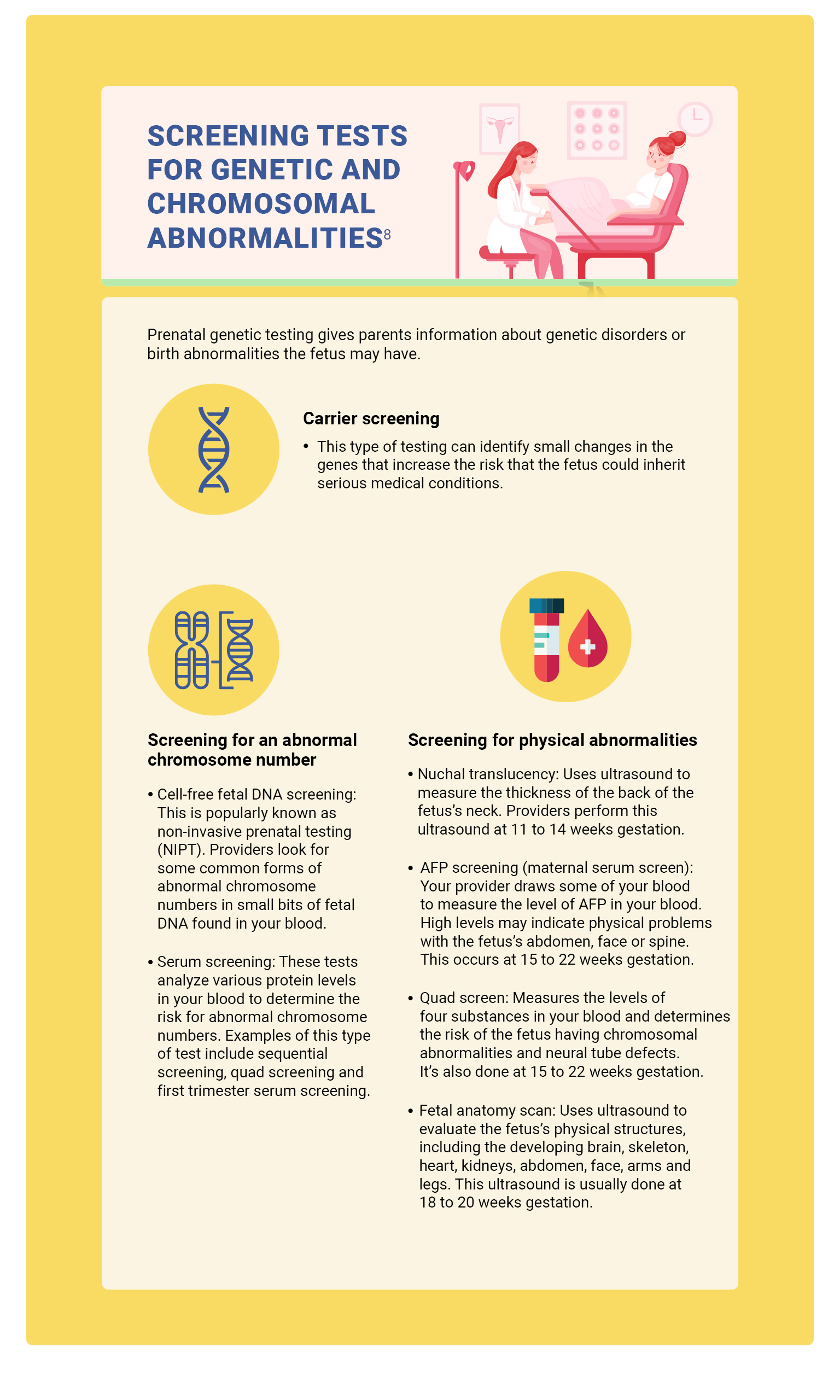Prenatal Care: Empowering Moms-to-be
5 mins read
Discover the Essential Guide to Prenatal Care for a Healthy Pregnancy Journey
Prenatal care is the healthcare you receive while pregnant. Regular prenatal care throughout your pregnancy helps to catch potential concerns early and reduces the risk of pregnancy and birth complications. As soon as you suspect you are pregnant, make an appointment with your OB/Gyn.1 Getting early and regular prenatal care can help you have a healthy pregnancy and a full-term baby.2 Babies of mothers who do not get prenatal care are three times more likely to have a low birth weight and five times more likely to die than those born to mothers who do get care.3 Doctors can spot health problems early when they see mothers regularly. This allows doctors to treat them early. Early treatment can cure many problems and prevent others. Doctors also can talk to pregnant women about things they can do to give their unborn babies a healthy start to life.3
Regular medical care during pregnancy provides you with vital information about changes in your body that could put the pregnancy or your health at risk. Ideally, you want to get prenatal care early in the pregnancy and regular care throughout.4 Prenatal care is especially crucial for women with high-risk pregnancies. Pregnancies with a greater chance of complications are called high-risk. These factors may increase the risk of problems during pregnancy:4
- Very young age or over age 35
- Overweight or underweight
- Problems in previous pregnancies
- Pregnancies with twins, triplets, etc.
- Current or past health conditions, such as high blood pressure, diabetes, cancer, HIV, and autoimmune disorders
If your pregnancy is considered high-risk, you’ll need to see your doctor more often to prevent further complications during pregnancy and labor. Even though you’re meeting with your doctor weekly, if you suspect there’s something wrong with your baby, go to the nearest medical health center immediately.4
How often do you go for prenatal care checkups?2
Most pregnant women can follow a schedule like this:
- Weeks 4 to 28 of pregnancy. Go for one checkup every 4 weeks (once a month)
- Weeks 28 to 36 of pregnancy. Go for one check-up every 2 weeks (twice a month)
- Weeks 36 to 41 of pregnancy. Go for one check-up every week (once a week)
If you have complications during pregnancy, your provider may want to see you more often.
How can you get ready for your first prenatal care check-up?2
Be ready to talk with your provider about
- The first day of your last menstrual period
- Health conditions you have like depression, diabetes, high blood pressure, and not being at a healthy weight
- Medicines you take, including prescription medicine, over-the-counter medicine, supplements and herbal products
- Your pregnancy history
- Smoking, drinking alcohol, using street drugs, and abusing prescription drugs
- Stress you feel
- Your safety at home and work
What happens at your first prenatal care checkup?4
At your first visit, your doctor will ask you questions about prior pregnancies, previous operations, and any diseases. Providing your doctor with a complete health history during early prenatal visits gives him or her the information needed to make sure you get the best care possible during your pregnancy.
- Your doctor will perform a physical exam, take your blood and urine for lab tests, and check your weight, height, and blood pressure.
- Your doctor might also do a breast exam, pelvic exam to check your uterus, and a cervical exam, including a Pap test.
- Subsequent visits will include checking your blood pressure and weight and checking your baby’s heart rate and growth.
- You will also get to hear your baby’s heartbeat and ask questions about your pregnancy during your prenatal appointments.
Regular prenatal care is important because during your routine visits, your doctor will check for anemia, preeclampsia, gestational diabetes, and other harmful infections that may affect your pregnancy, health, and baby’s health. During your prenatal care, your baby will be monitored for problems that may affect his/her health.
When Is the right time to schedule a prenatal visit?4
You want to schedule prenatal visits as soon as possible. Most ob-gyns recommend scheduling your first prenatal appointment 8 weeks from your last menstrual cycle. Most women don’t know they’re pregnant until between 4-6 weeks after conception. Before your prenatal visit, it’s normal for your doctor to order blood work. So, be prepared to schedule this appointment as part of your first prenatal visit.
Monitoring fetal growth and development.5
Fetal development is an orderly and intricate process. It begins before you even know you’re pregnant and ends with the birth of your baby. Between conception and delivery, there are many detailed steps that have to occur. There are three stages of fetal development: germinal, embryonic and fetal
Germinal stage
The germinal stage is the shortest stage of fetal development. It begins at conception when a sperm and egg join in your fallopian tube. The sperm fertilizes the egg and creates a zygote. The zygote begins its journey down to your uterus over the course of about one week. During this journey, the zygote divides many times, eventually creating two separate structures. One structure eventually becomes the embryo (and later, the fetus) and the other becomes the placenta. Cell division continues at a rapid pace. Eventually, the zygote turns into a blastocyst. The blastocyst arrives at your uterus and implants into your uterine lining. If implantation is successful, your body immediately begins producing hormones to support a pregnancy. This also stops your menstrual period.
Embryonic stage
The embryonic stage lasts from about the third week of pregnancy until the eighth week of pregnancy. The blastocyst begins to take on distinct human characteristics. It’s now called an embryo. Structures and organs like the neural tube (which later becomes the brain and spinal cord), head, eyes, mouth and limbs form. The embryo’s heart begins to develop and pulse around the sixth week. Buds that will become arms and legs also form around the sixth week. By the end of the eighth week, most of the embryo’s organs and systems take shape. For a lot of people, this is the point in pregnancy where morning sickness begins.
Fetal stage
The fetal stage of development begins around the ninth week and lasts until birth. This is when the embryo officially turns into a fetus. The fetus gets its assigned sex around nine weeks of pregnancy, although your healthcare provider can’t detect it on ultrasound yet. The fetus’s major organs and body systems continue to grow and mature. Things like fingernails, eyelashes and hair also grow. The fetus is able to move its limbs, although you may not feel it until 20 weeks of pregnancy. The majority of growth — in both weight and length — happens in the fetal stage.
Stages of Growth Month-by-Month in Pregnancy5
The fetus will change a lot throughout a typical pregnancy. This time is divided into three stages, called trimesters. Each trimester is a set of about three months. Your healthcare provider will probably talk to you about fetal development in terms of weeks. So, if you’re three months pregnant, you’re about 12 weeks.
First trimester
The first trimester will span from conception to 12 weeks. This is generally the first three months of pregnancy. During this trimester, the fertilized egg will change from a small grouping of cells to a fetus that begins to have human features. The first trimester is exciting, but also when most people develop unpleasant symptoms like morning sickness and fatigue.
Second trimester
The second trimester of pregnancy is often thought of as the best part of the experience. By this time, any morning sickness is probably gone and the discomfort of early pregnancy has faded. You may also start to feel movement as the fetus flips and turns in your uterus. During this trimester, many people find out about the fetus’s assigned sex. This is typically done during an anatomy scan (an ultrasound that checks physical development) at around 20 weeks.
Third trimester
This is the final part of your pregnancy. You may be tempted to start counting down the days to your due date and hope that it comes early, but each week of this final stage of development helps the fetus prepare for birth. Throughout the third trimester, the fetus gains weight quickly, adding body fat that’ll help after birth.
Fetal monitoring6
In pregnancy and during labor, your healthcare provider will want to check the health of your unborn baby (fetus). This is done by checking the baby’s heart rate and other functions. Fetal monitoring is a very common procedure. Monitoring can be done in 2 ways. It can be done on the outside of your belly (external monitoring). Or it can be done directly on the baby while inside your uterus (internal monitoring):
- External monitoring - This may be done with a special tool called a fetoscope. It’s a stethoscope that has a different shape. It may also be done using Doppler. This is an electronic tool that uses sound waves and a computer.
- Internal monitoring - A small wire (electrode) is put on your baby’s head while he or she is inside your uterus.
Fetal heart rate monitoring is used to check the rate and rhythm of the heartbeats. It looks for any increases or decreases in the baby’s heartbeat. It also checks how much the baby’s heart rate changes. The average fetal heart rate is between 110 and 160 beats per minute. The fetal heart rate may change as the baby responds to conditions in the uterus. An abnormal fetal heart rate or pattern may mean that the baby is not getting enough oxygen or there are other problems. An abnormal pattern also may mean that an emergency cesarean section (C-section) delivery is needed.
Why might I need fetal monitoring?6
Using a handheld Doppler device to listen to the fetal heartbeat is the most basic type of fetal monitoring. This is often done during prenatal visits to count the fetal heart rate. Fetal monitoring may also help show problems in the baby during late pregnancy and labor. It can show if other testing or a C-section may be needed.
How do I get ready for fetal monitoring?6
Getting ready for fetal monitoring depends on if it is external or internal. It also depends on if it is being done late in pregnancy or during labor. For external fetal monitoring during pregnancy with a Doppler, you may need to have a full bladder. There is no restriction of food or drink. You’ll be given a consent form to sign. Make sure to ask questions if needed. For fetal monitoring during labor, your healthcare provider will tell you if any preparation is needed.
5 Types of Foods to Include in Your Pregnancy Diet7

Food rich in Iron
5








